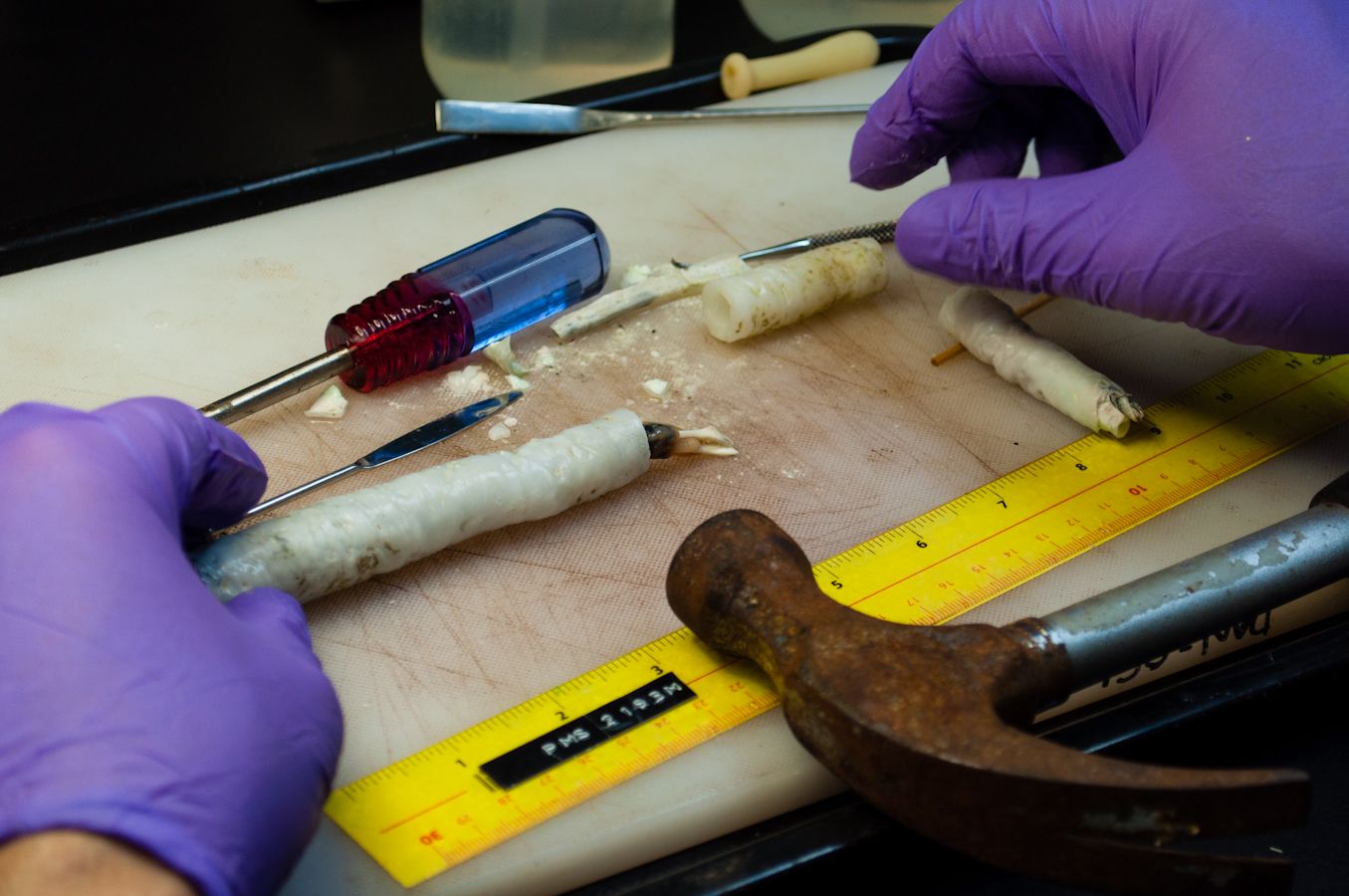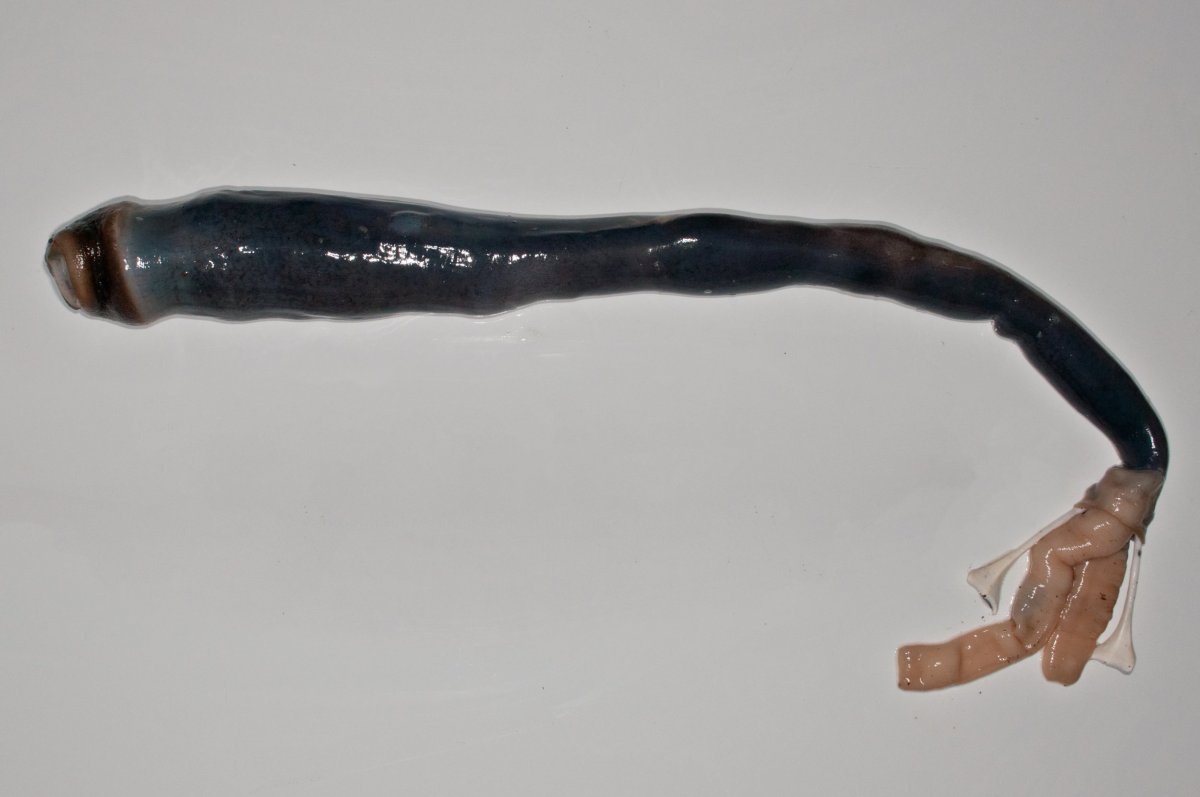
Although the giant shipworm was first categorized as a species more than 200 years ago, no living specimen had been examined by scientists and almost nothing had been known about it. That changed when Daniel Distel, a researcher at Northeastern University, and colleagues got their hands on a handful of the creatures during a research trip to the Philippines. Their analysis, in a study published April 17 in the journal Proceedings of the National Academy of Sciences, shows that these creatures are quite bizarre.
The giant shipworm, or Kuphus polythalamia, live inside large shells on the seafloor and grow to a length of more than five feet. That is much larger than other shipworms, which are generally diminutive. That, of course, led biologists to wonder why these creatures grow so big.
Other shipworms contain bacteria in their guts that break down cellulose, the stiff material of which plant cell walls are made. An investigation by the researchers, including Margo Haygood of the University of Utah College of Pharmacy, shows that Kuphus polythalamia don't contain large amounts of these bacteria, nor do they have other shipworms' hefty quantities of woody pulp in their guts. Rather, these giant weirdos contain a trove of unique bacteria that actually feast upon hydrogen sulfide. This gas, which to humans reeks of rotten eggs, is produced by festering wood and other rotting organic material in the seafloor. The unique adaption allows these huge animals to live in areas of the seafloor that would otherwise be uninhabitable, and it may also help explain their large size, allowing them to feed on a resource that moves to them, rather than having to move about nibbling wood.
These gut microbes convert hydrogen sulfide into sulfate, a process that provides energy for the species to live, Distel says. This is the same biological pathway used by animals like yeti crabs and giant mussels that live near ultra-hot hydrothermal vents that spew out hydrogen sulfide.
Many scientists believe that life evolved in hydrothermal vents in the sea—and may have survived by employing this same or similar biochemical process. The single-cell microbes then evolved into animals over the course of billions of years. Now, this research suggests that these shipworms evolved by harnessing the power of these sulfide-digesting bugs.
"It's an example of [evolution] coming full circle," Distel says.
Craig Smith, a professor of oceanography at the University of Hawai'i who wasn't involved in the paper, says it's a fascinating example of a shift between heterotrophy (obtaining carbon from other sources—in this case, wood) and chemoautrophy (fixing carbon and producing energy internally, via metabolism of hydrogen sulfide gas). Other creatures have almost made this evolutionary shift; research has suggested that small mussels that feed on dead whales and decaying wood on the seafloor evolved into larger species capable of living off of sulfide found at hydrothermal vents and cold seeps.
The first of these big shipworms found its way to researchers via a lucky break. The scientists were on a trip to the Philippines when they came across a video from a local news station about the alleged medicinal benefits of eating marine worms. One of the creatures pictured looked like Kuphus polythalamia (which are not actually worms, but more closely related to clams). The researchers then made inquiries of colleagues in the Philippines, and eventually tracked down a population of the bizarre creatures in a remote area of Mindanao province, in a lagoon once used by a mill as a place for storing wood, Distel explains. The rotting material sunk to the seafloor and provided ample food for the animals.
The team is now looking to further investigate the bacteria that live within the giant shipworms, which for now they have termed 2141T but will get a more technical scientific name.

Uncommon Knowledge
Newsweek is committed to challenging conventional wisdom and finding connections in the search for common ground.
Newsweek is committed to challenging conventional wisdom and finding connections in the search for common ground.
About the writer
Douglas Main is a journalist who lives in New York City and whose writing has appeared in the New York ... Read more
To read how Newsweek uses AI as a newsroom tool, Click here.








